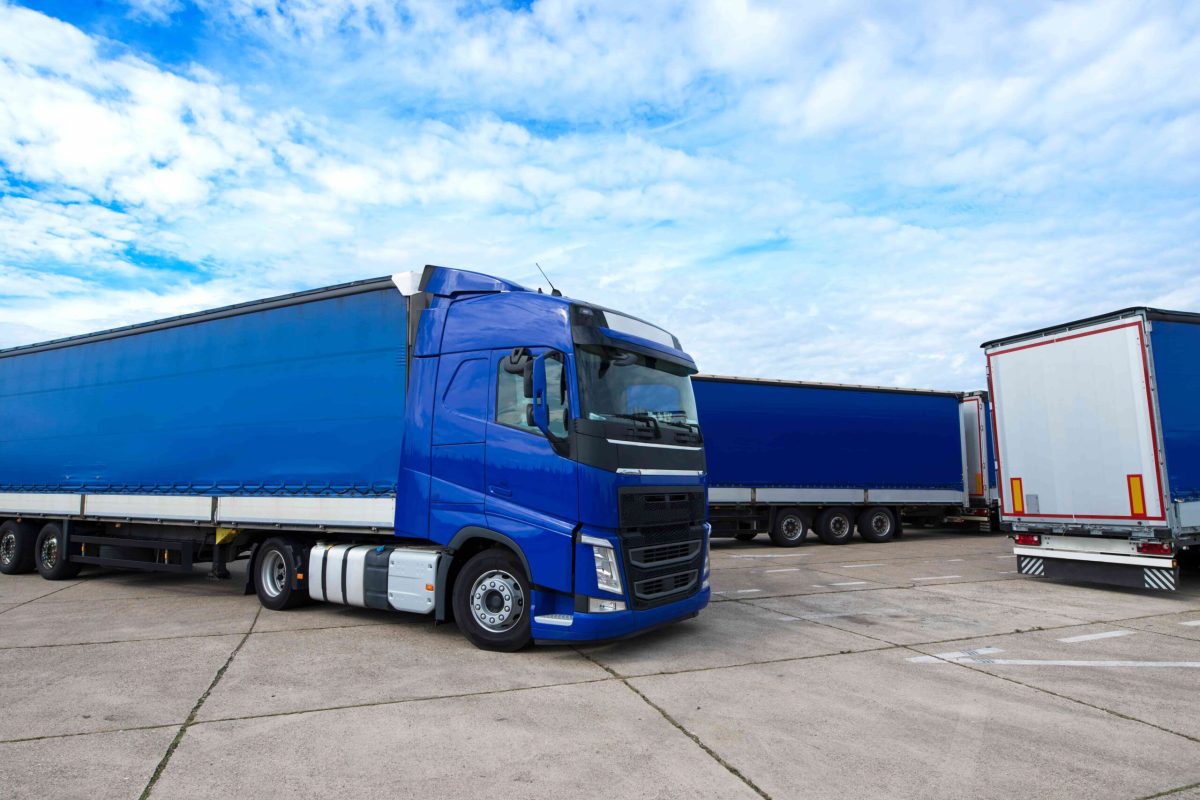Warehouse logistics are far from simple. Still, seamless operations in a warehouse matter if you want to guarantee seamless movement of goods from the warehouse to supplier to customer. So, in this guide, we dive deep into the warehouse logistics system. We’ll shed light on all the obstacles, advantages, and optimal approaches linked to it.
Knowing the ins and outs of warehouse logistics goes beyond just optimizing your inventory management and order fulfillment. It’s about boosting your business’s profitability, elevating your team’s efficiency, and delivering top-notch customer service to your clients. So, let’s get into the details.
What is Warehouse Logistics?
Understanding warehouse logistics starts with grasping the essence of what it is—it’s a process that involves detailed planning, logistics organization, and managing complex operations. Think of it as coordinating one seamless flow of physical goods and information within your warehouse space.
From managing inventory movements to handling distribution and customer returns, warehouse logistics includes many moving pieces crucial for smooth operations. You’ll need to establish protocols and guidelines to guarantee smooth operations and improve warehouse logistics, covering everything from handling shipments to managing personnel.
In essence, warehouse logistics serves as the foundation of your facility, ensuring that every aspect of your operations runs efficiently and reliably.
The Challenges of Warehouse Logistics
Common hurdles in warehouse logistics often center on your organization. How do you effectively manage a vast warehouse space? Yet, it’s essential. You must locate inventory precisely, trace expired items, and track damaged shipments.
Achieving these controls is vital for smooth warehouse operations and profits, but it will be extremely difficult without the right tools. Warehouse managers’ challenges extend beyond the organization to inventory, supply chain, transportation costs, HR, risk, and security.
How do you balance flexibility, customer satisfaction, and revenue protection? These are the dilemmas confronting warehouse managers and warehouses today.
How to Improve Warehouse Logistics
Beyond the obvious, warehouse impediments can seep into essential domains of your warehouse— supply chain management, inventory management, cost containment, human resources, risk assessment, and security.
Still, balancing agility and competitiveness while meeting your customer’s order demands and safeguarding revenue streams is the real challenge.
How do you navigate this intricate process? It’s about adapting swiftly to customer demand and market shifts without compromising service quality or risking financial stability. These dilemmas underscore the modern warehouse management landscape, where success hinges on mastering the art of balance amidst a myriad of competing priorities.
Benefits of Warehouse Logistics

The key benefit of efficient warehouse logistics for shipping and warehousing companies is clear: it leads to increased revenue.
Imagine this scenario: When your own warehouse manager and logistics warehousing system functions smoothly, with precise inventory management, prompt order processing, and minimal mistakes, productivity soars. Introducing a reliable Warehouse Management System (WMS) guarantees:
- Accurate, real-time inventory monitoring — Locate items in your warehouse instantly.
- Decreased returns — Get orders right the first time, reducing returns.
- Automated stock replenishment — Keep inventory levels optimal with automated restocking.
- Space optimization — Use automation to maximize storage space or warehouse space.
Additional WMS advantages encompass better demand forecasting, more supply chains, more inventory, heightened visibility of the entire supply chain, reduced errors, streamlined warehouse operations, and top-notch customer service—ultimately slashing costs and boosting revenue.
Warehouse Considerations Influence Warehouse Logistics
Warehouse logistics encompass many elements that significantly influence the success of operations. These three considerations should be top of mind:
Floor Space and Coordination
Efficient warehouse floor space holds immense significance for better warehouse logistics. Seamless operations rely on harmonious coordination with transportation providers, 3PL partners, and suppliers while ensuring alignment with key performance indicators (KPIs).
Adaptability
Moreover, adaptability to evolving variables like layout, inventory, and staffing is paramount. Warehouse functions inherently entail dynamism, requiring adaptability and swift responses to evolving requirements.
This raises the need for continual evaluation and fine-tuning of the warehouse management systems and procedures for ongoing improvement and operational excellence.
Technology
Technology is the backbone for productivity and efficiency, from digital software to physical assets like desktop computers. However, managing these assets can be complex, particularly for larger enterprises. Many businesses are adopting IT asset management (ITAM) solutions to address this challenge.
These tools consolidate the tracking and managing of all digital and physical IT assets. They provide leaders comprehensive insights into usage metrics, costs, compliance, and more. A well-structured ITAM approach and suitable software significantly impact overall organizational success.
Understanding IT Asset Management
IT Asset Management (ITAM) entails a holistic approach to consolidating the tracking of physical and digital IT assets. It offers organizations a transparent perspective on technology asset life cycle expenses to enhance their IT hardware and software investments.
Adopting ITAM software can help you better oversee all your assets in a unified platform. The solution helps monitor usage data and eradicate the necessity for complex spreadsheets or manual check-in/check-out business processes.
While cost management is a significant benefit, the ultimate objective of ITAM is to empower organizations to leverage their IT assets effectively, legally, and efficiently. With proper implementation, ITAM minimizes downtime and enhances organizational productivity, ensuring that technology resources align with business goals for maximum effectiveness.
Types of IT Assets Management
IT asset management software typically categorizes assets into two main groups: digital and physical. Both are crucial for maintaining productivity, but the methods of tracking these assets within an ITAM solution may vary.
Physical IT assets are tangible items and are a significant component of your business and technology infrastructure. These physical inventory assets encompass various items such as:
- Hardware —This classification encompasses networking devices, computers, servers, external hard drives, and other storage equipment.
- Peripheral devices — These supplementary tools enhance the functionality of your primary hardware, encompassing printers, scanners, and monitors.
- Mobile devices — As remote work expands, notably in fields like construction and warehousing, the dependence on mobile technology has significantly increased.
- Datacenter machinery — This encompasses server racks, cooling setups, and backup power systems.
Why IT Asset Management Is Important
Effective IT asset management is vital for every organization if you operate a small startup or a multinational corporation.

1) Cost Savings
Measurement is also integral to effective management, a principle that holds for IT Asset Management (ITAM). Instead of blindly investing in IT assets, an ITAM solution provides precise tracking and management. Some modern ITAM platforms offer automated management features leveraging machine learning and artificial intelligence.
This approach helps organizations avoid overbuying or underutilizing equipment and software by identifying redundant or underused assets for reallocation or retirement, thus optimizing budgeting and financial planning.
2) Improved Compliance and Risk Management
Compliance is particularly vital in heavily regulated sectors like chemical manufacturing and pharmaceuticals. IT Asset Management (ITAM) meticulously tracks software licenses and regulatory requirements, aiding in avoiding issues. Effective asset management enhances security by facilitating better asset tracking and maintenance, safeguarding against security breaches, and ensuring protection against evolving cybersecurity threats.
3) Enhanced Productivity and Efficiency
IT asset management provides insights into available resources, enhancing resource allocation and equipping employees with the necessary tools for their tasks. This reduces downtime and enhances delivery times, particularly for IT-related concerns.
Additionally, effectively managed IT assets typically experience longer lifespans, minimizing unexpected breakdowns and the need for replacement orders, further reducing downtime and overall costs.
4) Long-term Advantages
ITAM lays the foundation for long-term success in your business. By customers and offering insights into IT asset usage, it empowers customers with strategic decision-making regarding technology investments and upgrades. Also, ITAM facilitates the alignment of IT assets with your organization’s mission and long-term objectives, ensuring alignment with your core values and vision.
Read next blog: Protecting Business Interests With Policies for IT Asset Management
7 IT Asset Management Best Practices
Keep these best practices in mind when you’re implementing IT asset management in your company:
1) Choose Software That Tracks Everything
While many contemporary IT asset management solutions monitor digital and physical assets, exceptions exist. Certain platforms exclusively monitor digital assets like licenses, subscriptions, and digital media.
While tracking one type of asset provides value, organizations require hardware such as computers, servers, and networking equipment to store products and access these digital assets. Therefore, opt for an ITAM solution capable of tracking all asset types.
2) Streamline Inventory Management With Technology
Efficient inventory control and monitoring are indispensable components of IT asset management. Rather than relying on manual inputting of assets, employing barcode labels or RFID tags enhances precision inventory metrics and streamlines the entire process and asset tracking procedure. This would significantly improve warehouse operations.
This setup ensures comprehensive asset oversight, facilitates near-real-time status updates, and expedites asset location. Integrating collaborative robots streamlines the labeling process, simplifying loss identification and enabling informed business decisions regarding asset deployment.
3) Account For Device Lifecycles
Every IT hardware or device has a finite lifespan, requiring eventual disposal within your organization. IT asset management solutions monitor each asset’s lifecycle stage and usage, offering a tailored approach to asset management.
Rather than relying on generic end-of-life schedules, your ITAM solution provides personalized recommendations for maintenance and disposal guided by actual usage data. These tailored insights empower accurate data-driven decisions on asset upgrades or retirement, maximizing their long-term value and effectiveness.
4) Back-Up ITAM With Official Policies
While IT lifecycle management software automates many tasks, it’s essential to complement it with tailored IT asset management policies. This ensures that the policies align with the organization’s needs rather than relying solely on default software regulations.
Given the unique nature of each organization, customizing policies and processes involved in adapting ITAM software accordingly yields optimal outcomes.
You must establish explicit guidelines for IT asset storage facility maintenance, upgrades, and disposal of raw materials. For instance, you might exceed basic e-waste disposal standards by implementing eco-conscious disposal policies in line with the organization’s sustainability objectives.
5) Use High-Quality, Durable Asset Labels
Investing in durable IT asset labels is essential to improve productivity and maintain the accuracy of your IT asset management (ITAM) processes over time. Using resilient labels from the outset of an ongoing process can avoid the inconvenience and potential errors caused by labels fading, rubbing off, or falling off prematurely.
Camcode offers durable asset labels and security labels designed to withstand the rigors of everyday use and various environmental conditions, including exposure to heat or chemicals. These robust labels provide long-lasting identification and protection for your IT assets, ensuring the effectiveness of your ITAM efforts.
6) Automate What You Can
Many leaders find it challenging to manually oversee numerous assets in one location due to time constraints and potential errors, making automated storage solutions essential. By implementing automated software, you can streamline asset-tracking processes, reduce costs, and maximize efficiency.
Simple trigger-based automation within your ITAM software can handle various tasks, such as automatically generating support tickets when assets are scanned by the IT department. While not all ITAM software incorporates AI, this feature can significantly improve analysis by identifying usage trends. Although AI-powered ITAM requires substantial data collection, it often surpasses human analysis in efficiency and accuracy.
7) Regularly Audit Assets
Occasionally, the data stored in your ITAM software may not match the on-site situation. Regular audits are vital for validating inventory accuracy, detecting inconsistencies, and optimizing shipping costs, ultimately ensuring assets reach their final destination promptly and intact. Moreover, frequent audits can significantly enhance compliance efforts and risk mitigation, especially in regulated sectors where adherence to specific standards is crucial for maintaining operational integrity.
10 Best IT Asset Management Software Tools
Looking for Asset Management Tools? Check out these options:
1) ZenduMA

ZenduMA stands out as a state-of-the-art system for fleet maintenance management, aimed at boosting the efficiency and dependability of fleet activities. It comes packed with a full range of features for keeping tabs on vehicle condition, organizing maintenance routines, and improving overall fleet effectiveness.
Key features: Real-time vehicle diagnostics, enabling preventive maintenance scheduling, and managing work orders efficiently. It also supports comprehensive asset tracking and seamlessly integrates with diagnostic tools, empowering users to make data-driven decisions for optimal maintenance and fleet management.
2) SysAid
SysAid presents a suite of solutions seamlessly integrating IT asset management with service desk communications and data. Benefit from its inventory management capabilities, providing a holistic overview of hardware and software assets in a single interface. Alternatively, leverage its monitoring functionalities to gain insights into real-time device usage patterns.
Key features: Customizable alerts, efficient software license management, and network discovery capabilities, empowering organizations with comprehensive IT asset oversight, reducing costs, and improving operational efficiency.
3) Freshservice
Opt for Freshservice if you’re dealing with many existing assets, as it offers swift identification and management of all devices within your network. While primarily catering to IT service providers, this solution is equally effective for tracking on-premise and cloud infrastructure in large organizations.
Key features: Configuration Management Database (CMDB) functionality, streamlined asset lifecycle management, and robust automation and analytics capabilities, empowering efficient asset tracking and management across diverse environments.
4) UpKeep
UpKeep is a widely adopted asset and maintenance management solution, offering versatility beyond IT applications. Its maintenance-centric design caters well to IT teams requiring frequent hardware repair tasks.
Key features: Mobile-first accessibility, ensuring flexibility in managing assets on the go, proactive notifications for minimum inventory thresholds and stock levels, and streamlined work order management functionalities.
5) ManageEngine AssetExplorer
AssetExplorer streamlines asset identification and management across your organization, handling every aspect of the asset lifecycle, including licensing, contracts, and compliance.
Key features: Purchase order management, inventory management, and CMDB functionality.
6) ServiceNow
ServiceNow equips you with advanced analytics for informed IT asset decisions. Effortlessly monitor employee hardware and software allocations through a structured onboarding process. It logs device servicing and facilitates asset audits.
Key features: Asset governance, total cost of ownership tracking, and contract management.
7) GoCodes
GoCodes excels in tracking office equipment via an IoT-enabled system. Its streamlined check-in/check-out process is perfect for teams frequently using IT equipment.
Key features: Scanner apps, real-time reporting, and Bluetooth beacons.
8) Pulseway
Pulseway’s IT asset management software offers complete control over your IT assets. It tracks assets in real-time via physical scanning, network device monitoring, and server modules. Utilize its autodiscovery feature to identify overlooked endpoints.
Key features: Real-time monitoring, instant alerts, network discovery, deployment, and drag-and-drop automation.
9) Itarian
While primarily a remote monitoring company, Itarian offers robust IT asset management tools tailored for small businesses. It handles alerts, enables custom checklist creation, and provides real-time, mobile-friendly reports.
Key features: Multi-user functionality, a mobile-first platform, and customizable reports.
10) Snipe-IT
Snipe-IT is a security-focused open-source IT asset management platform. Ideal for heavily regulated industries, it enables tracking of all assets and streamlines the check-in/check-out process.
Key features: Slack notification integration, a robust API, and pre-defined checkout kits.
CMMS vs. EAM: Which One is Right for Your Business?
Software for managing enterprise assets (EAM) and computerized maintenance management systems (CMMS) offer distinct features, each with benefits. Refer to this guide to determine the most suitable option for your organization and understand the disparities between CMMS and EAM.
What is a CMMS?
A CMMS is a digital solution crafted to streamline maintenance operations through effective task management, scheduling, handling of work orders, and inventory control. It’s equipped with functionalities such as scheduled maintenance, tracking of assets, managing work orders, and detailed reporting. This software enables companies to enhance the reliability of their assets, reduce downtime, manage maintenance costs better, and increase overall operational productivity.
What is an EAM?
A CMMS’s limitations are exceeded by enterprise asset management (EAM) software, which provides sophisticated functionalities beyond routine maintenance. Asset lifecycle management is made easier with EAM platforms, which offer extensive functionality for managing resource planning, maintenance, tracking, financial management, and other critical areas of asset management.
They give organizations a holistic perspective of their assets, including thorough maintenance records, warranty details, financial insights, and usage trends. Leveraging EAM software enables informed decision-making on asset utilization, replacement plans, and lifecycle optimization, enhancing operational efficiency and cost-effectiveness.
CMMS vs. EAM
While CMMS and EAM systems share some similarities, they exhibit distinctions. These variances include:
- Scope: CMMS primarily addresses maintenance tasks such as work orders, whereas EAM encompasses broader inventory management functions like resource planning and finances.
- Scalability: EAM systems are favored by larger organizations due to their ability to handle extensive data volumes and complex workflows, while CMMS systems are more common among SMBs with more straightforward maintenance needs.
- Integrations: EAM software offers more integration options with other systems than CMMS.
- Cost: EAM software, offering more sophisticated features, generally has a higher price tag than CMMS software.
Final Thoughts
Handling warehousing logistics is crucial for making distribution centers run smoothly. Companies can boost warehouse efficiency and success by facing challenges directly and adopting the best approaches. Leveraging technology efficiently and promoting teamwork among stakeholders create abundant prospects for improving warehouse operations and discovering avenues for growth.
Companies can stay ahead of the curve by continuously refining approaches, remaining flexible in response to changing situations, and providing outstanding customer experiences. The quest for optimizing warehouse logistics is perpetual, yet the benefits it brings are truly valuable.





